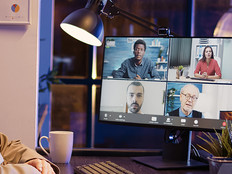How 5G Wireless Could Transform Business
Did 4G pass your business by? No worries — providers have begun laying the foundation for fifth-generation wireless communications.
Widespread use of 5G wireless (which will live in frequencies from 6 gigahertz to potentially 90GHz) remains years off, but the first tools are in development. In part, adoption will hinge on availability of some enabling technologies, such as millimeter wave, which is used for space and military applications.
Forecasts from the International Telecommunication Union peg 5G speeds at a 20-gigabit-per-second maximum. “For the average user, 100 megabits per second is more realistic,” says Gartner Research Director Akshay K. Sharma.
The industry originally predicted similar throughput for 4G, though users ultimately achieved only about one-tenth of that, Sharma says.
Proponents plan to adopt 5G standards globally to allow wide deployment by 2020, with prestandard technologies appearing sooner, says Franklin Flint, chief technology officer of the Telecommunications Industry Association.
The probable applications are many — from digital interactive product experiences in virtual reality and holographic projection to 3D medical imaging and high-definition video conferencing. Plus, there’s an expectation that 5G will improve wireless performance in large, heavily trafficked areas.
The percentage of 5G-capable base stations by 2019
SOURCE: Gartner, “Forecast Analysis: Communications Service Provider Operational Technology, Worldwide,” 2015
Realizing the Benefits
With 5G, businesses could develop interactive virtual reality technologies that let shoppers enter dynamic video experiences much like avatars in a video game. Users might be able to test-drive a car or walk through a house to compare furniture, Flint says. “5G’s low lag time will make this possible.”
Additionally, 5G holographic projection will let users view 3D video without 3D glasses. Businesses could leverage this capability to provide 3D presentations at events, Flint suggests.
Medical businesses will benefit from 3D imaging as well. “Examples include remote surgery with robotics, where a doctor is present in the operating room but has assistance from a specialist in another part of the world,” Sharma says.
Businesses can also expect high-quality HD, 4K and 8K (streaming) video calls via smartphones with 5G, Sharma adds.
But perhaps most appealing to businesses will be the performance boost in service, Flint says. This will help with employee collaboration and let businesses support customers better.
During rush hour on major highways in large cities, thousands of people huddled into tight spaces rely on their cars, smartphones, wearables and medical devices to connect and function properly. “The added capacity of 5G will better accommodate all those devices,” Flint says.







